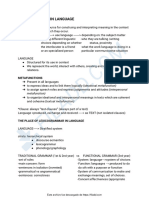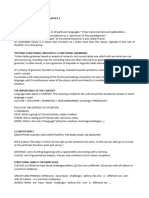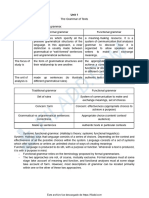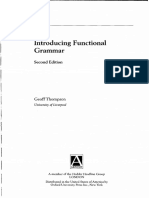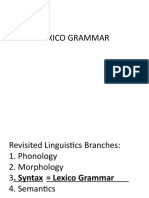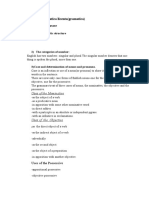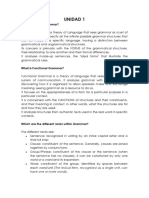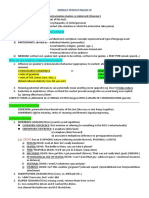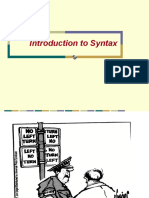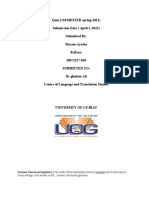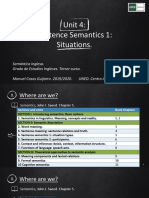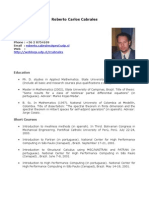0% found this document useful (0 votes)
88 views18 pagesHypotactic Structure in English Dessy Kurniasy: IAIN Langsa
This article discusses hypotactic structure in English. It analyzes clause complexes comprised of two or more logically connected clauses. There are two types of hypotactic structure: expansion and projection. Expansion includes elaboration, extension, and enhancement clauses. Projection involves locution and idea clauses. The study used a qualitative approach analyzing linguistic books to identify and classify the different types of hypotactic structures in English.
Uploaded by
Syed Nadeem AbbasCopyright
© © All Rights Reserved
We take content rights seriously. If you suspect this is your content, claim it here.
Available Formats
Download as PDF, TXT or read online on Scribd
0% found this document useful (0 votes)
88 views18 pagesHypotactic Structure in English Dessy Kurniasy: IAIN Langsa
This article discusses hypotactic structure in English. It analyzes clause complexes comprised of two or more logically connected clauses. There are two types of hypotactic structure: expansion and projection. Expansion includes elaboration, extension, and enhancement clauses. Projection involves locution and idea clauses. The study used a qualitative approach analyzing linguistic books to identify and classify the different types of hypotactic structures in English.
Uploaded by
Syed Nadeem AbbasCopyright
© © All Rights Reserved
We take content rights seriously. If you suspect this is your content, claim it here.
Available Formats
Download as PDF, TXT or read online on Scribd
/ 18


